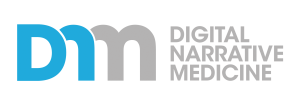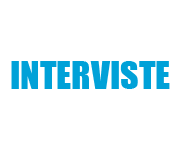Medical professionalism and Health Humanities
What the study of literature can contribute to the conversation
Articolo di BioMed Central
Over the past fifty years the study of literature has become a generally accepted aspect of medical education. As thoughtful scholars have recently considered how to teach professionalism effectively and meaningfully, questions have arisen about the role of stories, essays, first-person narratives, and poetry in facilitating the professional identity formation of medical students. Those who argue affirmatively imply that exposing students to literature will inculcate professionalism virtues and attributes [1]. Those who disagree assert that the study of literature has goals and purposes unrelated to professionalism [2]. In this article, we investigate definitions of medical professionalism, and frame its inclusion in the competency framework as an effort to anchor its abstract virtues in behavioral specificity. Next we consider how literature can advance our understanding of medical professionalism through a different kind of singularity grounded in the literary method of close reading. Ultimately, we contend that the development of medical professionalism will benefit from the critical and interrogative methods of literature.
This article is a result of the Project to Rebalance and Integrate Medical Education (PRIME), sponsored by the Patrick and Edna Romanell Foundation. PRIME focused on how medical ethics and humanities education are prerequisite to professionalism formation in medical school and residency training [3, 4]. PRIME, in turn, resulted in the creation of the Academy for Professionalism in Health Care as an organization devoted to professionalism education [5].
The conundrum of professionalism in medical education
There are at least two significant issues to consider in discussing medical professionalism. One has to do with the contentof professionalism itself, i.e., how it is defined. The second is essentially an implementation issue, i.e., the methods which establish how professionalism is achieved. These issues, and their implications for professionalism education, are discussed below.
Defining medical professionalism
The Medical Professionalism Project initiated by the American Board of Internal Medicine Foundation, the American College of Physicians Foundation, and the European Federation of Internal Medicine resulted in a professionalism charter consisting of virtue-based attributes such as altruism, trust, honesty, patient empowerment, and commitment to social justice [6]. Medical educatorshave also argued for a virtue-based definition, including qualities of compassion, integrity; truth-telling; respect for others; self-effacement; and fidelity to patients [7–10]. Prior PRIME publications acknowledged the importance of scientific and clinical competence using established rigorous evidence-based medicine; while emphasizingpromotion of patients’ best interests as the clinician’s primary moral consideration (with self-interest as a subservient claim) and honoring the exercise of the public trust, as a necessary obligation to carry forth the fiduciary traditions of medicine (as opposed to guild-like self-interest) [4]. Other definitions also support the commitment to and reinforcement of moral values and ethical principles [11, 12].
These definitions, while valuable, highlighted primarily general, abstract virtues and attributes that have proved difficult to translate into daily actions. Recent considerations of professionalism and professional identity formation have stressed the necessity of moving from abstraction to practice [13, 14], highlighting what is often referred to as phronesis or practical wisdom [15]. Medical educators have wrestled with this challenge for the past decade, most notably through the effort to incorporate medical professionalism into the competency framework.
Professionalism as a competency
Indeed, it could be argued that the rise of the competency movement in medical education [16] has been an effort to anchor generalities of training in specific, concrete, measurable behaviors. In terms of professionalism specifically, attempting to inculcate values and virtues often struck both learners and educators as threatening and potentially implying character defects in students [17]. Thus, professionalism moved from the conceptual realm to become one of six essential medical education competencies, sometimes viewed as a “meta”- or “ordering” contextual competency for more technical competencies [18, 19]. In this respect, competency-based education appeared to offer a “solution” to the abstract nature of earlier approaches to conceptualizing professionalism, precisely because of its behavioral specificity. Many medical educators found the notion of professional competencies appealing because they seemed to offer the promise of transforming amorphous, ill-defined, and difficult-to-measure qualities into instrumental behaviors that were observable and assessable. Recently more detailed “milestones” have been added to supplement and refine the six competencies, but these remainrooted in the establishment of measurable behavior [20]. Whether discussing milestones or competencies, the language employed reflects a tendency in these guidelines to prescribe, control, and shape learners in specific, reductive directions.
Challenging a behavioral approach to medical professionalism
Even as professionalism became identified as an area of medical competence, some medical educators’ reflections on the topic continued to reveal a discomfort with behavioral pedagogical approaches, instead advocating for developing, reinforcing, and sustaining deeply held attitudes and values [17, 21]. As Hanna and Fins write, medical students must learn how to “be good doctors”, rather than merely to act like good doctors [18, 22, 23]”.
Others also assert that behavioral professionalism tempts students to behave in ways that fulfill others’ expectations of professionalism without actually believing in the virtues or principles that underpin these behaviors [24], resulting in an emphasis on surface impression management [25]. Others complain that in clinical settings, professionalism is simplistically and narrowly defined as a technical problem, with most solutions offered being prescriptive, mechanical, and rule-bound [26]. continua a leggere






